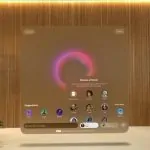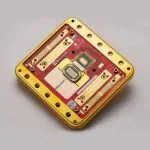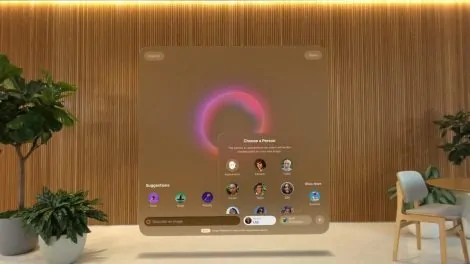Samsung Eyes XR Market with Imminent Glasses Reveal. Speculation is rampant about the imminent reveal of XR glasses, which could mark a pivotal moment in the competition for dominance in this rapidly evolving sector. This move not only signals Samsung’s commitment to staying at the forefront of technological advancement but also underscores the growing importance of XR in reshaping entertainment, productivity, and everyday interactions.

Samsung’s focus on the XR market comes at a time when demand for immersive technology is at an all-time high. Extended reality, an umbrella term encompassing virtual reality (VR), augmented reality (AR), and mixed reality (MR), has seen exponential growth in recent years. As industries from gaming to healthcare embrace these technologies, Samsung’s XR glasses are poised to cater to a wide range of applications, offering both personal and professional users a blend of cutting-edge features and seamless integration with existing ecosystems.
Breaking Down the Anticipation for Samsung’s XR Glasses
The potential reveal of Samsung’s XR glasses has sparked discussions about their expected features, design, and market positioning. Based on preliminary leaks and market trends, these glasses are anticipated to incorporate state-of-the-art display technology, powered by Samsung’s expertise in OLED and AMOLED panels. This would ensure vibrant visuals, a hallmark of immersive XR experiences. Additionally, advancements in hardware and software integration are likely to enhance usability, offering intuitive controls and compatibility with smartphones and other devices in the Samsung ecosystem.
The timing of this announcement aligns with the company’s strategic push into next-generation technologies. Samsung has historically leveraged its expertise in semiconductors, displays, and mobile technology to deliver innovative products. XR glasses would allow the company to diversify its offerings and compete directly with established players such as Apple, Meta, and Microsoft, each of which has already made significant strides in the XR space.
The Growing Significance of XR Technology
Extended reality is no longer confined to niche applications; it has become a cornerstone of digital transformation across multiple sectors. Gaming and entertainment remain primary drivers, with XR offering users the ability to interact with 3D environments in ways that were previously unimaginable. However, its potential extends far beyond leisure activities. In healthcare, XR is being used for surgical training and patient rehabilitation. In retail, brands are adopting AR for virtual try-ons and interactive shopping experiences. Education, architecture, and even space exploration are tapping into XR’s capabilities to deliver enhanced outcomes.
Samsung’s entry into the XR market with its glasses could amplify these applications, particularly if the device emphasizes portability and ease of use. Unlike bulky headsets that limit adoption, compact and lightweight glasses could attract a broader audience, including those who are new to XR technology.
Comparison of Existing XR Players
| Company | Device | Key Features | Market Focus |
|---|---|---|---|
| Meta | Meta Quest Series | Standalone VR, Hand Tracking, Social Integration | Gaming, Social VR |
| Apple | Apple Vision Pro | High-resolution Displays, Spatial Computing | Productivity, High-end XR |
| Microsoft | HoloLens | Enterprise MR, Collaboration Tools | Enterprise, Industrial XR |
| Samsung | (Upcoming XR Glasses) | (Speculative: AMOLED, Seamless Ecosystem Integration) | (Broad: Consumer and Enterprise) |
Challenges and Opportunities
Entering the XR market is not without its challenges. Competition is fierce, with established brands vying for market share through differentiated features and competitive pricing. Samsung must strike a balance between innovation and affordability to ensure widespread adoption. Battery life, heat management, and comfort are other critical factors that could influence the success of its XR glasses.
On the other hand, Samsung has several advantages. Its extensive global presence and loyal customer base provide a solid foundation for marketing and distribution. The company’s ability to integrate XR glasses with its ecosystem of smartphones, smartwatches, and smart appliances creates a compelling value proposition for consumers. Moreover, Samsung’s reputation for investing in R&D ensures that its product will likely feature cutting-edge technology that sets it apart from competitors.
The Future of XR and Samsung’s Role
As XR technology continues to mature, its integration with emerging trends like 5G, AI, and IoT is expected to unlock new possibilities. Samsung’s potential entry into this space could catalyze innovation and drive mainstream adoption. By focusing on user-centric design and leveraging its existing technological assets, the company is well-positioned to shape the future of XR.
Whether for entertainment, education, or enterprise use, Samsung’s XR glasses could redefine how you interact with digital content and bridge the gap between virtual and real-world experiences. While the official reveal date and detailed specifications remain under wraps, the anticipation surrounding Samsung’s XR entry is a testament to the transformative potential of this technology. As the world waits for the big unveiling, one thing is clear: the XR market is on the cusp of an exciting new chapter, with Samsung likely to play a starring role.










Add Comment